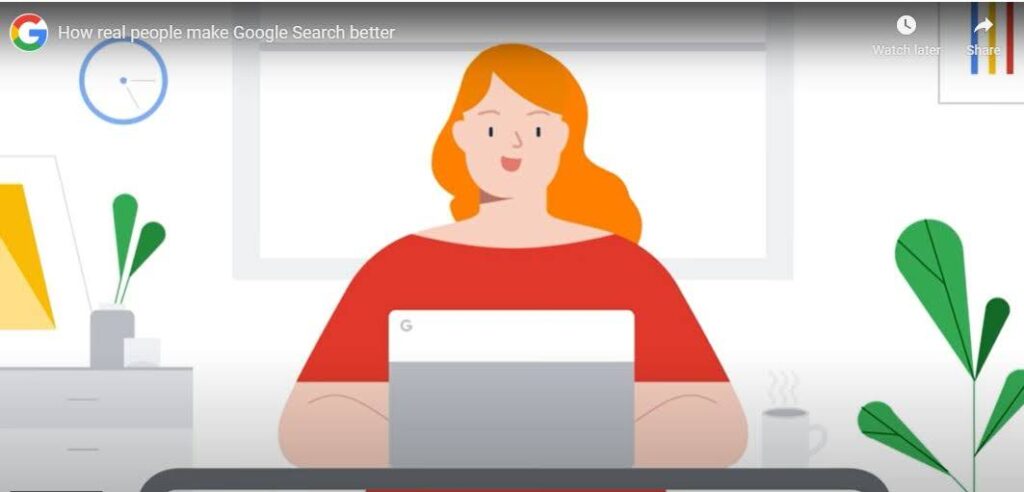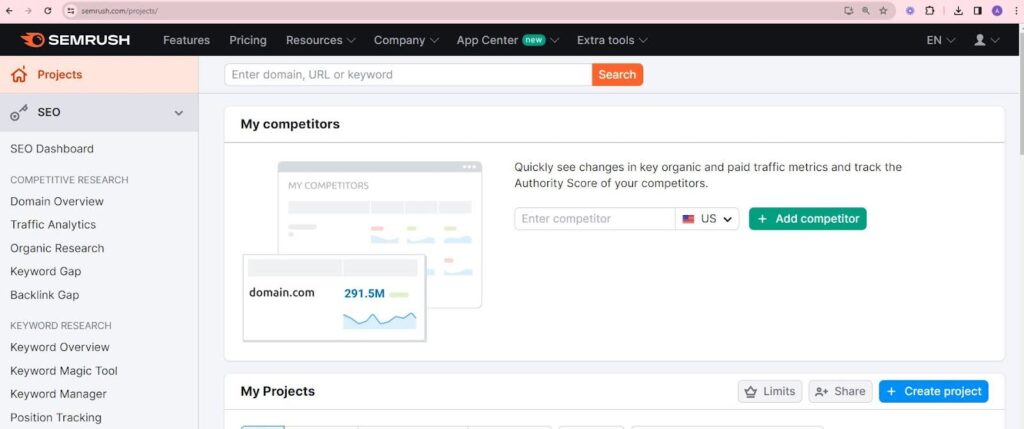 Over the last year, content creation has undergone a massive, world-changing overhaul. This has been due to one program – ChatGPT. With a sudden flood of millions of pieces of AI-generated content, how can the search engines (specifically, Google) keep up? How can you rank today if anybody can push one button to generate a quality, 2,000 word article?
Over the last year, content creation has undergone a massive, world-changing overhaul. This has been due to one program – ChatGPT. With a sudden flood of millions of pieces of AI-generated content, how can the search engines (specifically, Google) keep up? How can you rank today if anybody can push one button to generate a quality, 2,000 word article?
Today I get into the SEO recipe that you can use to rank your content above all others. I then go into ranking your website as a whole (as Google is now factoring in your entire website), as well as some great site optimization tips.
As a content creator in 2024, you face both challenges and opportunities. Google’s algorithm updates over the past two years show an intense focus on rewarding “helpful” content that demonstrates true expertise, depth, and value for readers (you can read that here).
It’s a new world demanding higher content standards than ever before. However, one thing has not changed: “Content must be useful to human readers.” And not only useful, but it must have the human element. Let’s get into this now.

Ingredient #1 – The Human Touch
AI-powered writing tools represent an incredible asset for content creators – able to generate reams of text in seconds. But these technologies also pose risks if used irresponsibly or as a crutch. So how do you responsibly integrate AI content generation while preserving the human touch?
While promising, AI still lacks fundamental human qualities that build connection and authority:
- First-hand experiences and relatable stories
- Unique perspectives, analysis and opinions
- Conversational tone and distinctive voice
- Links to wider cultural context and understanding
Here’s our game plan:
First, let that super-fast AI brain take on the grunt work of research for you. It can digest mountains of data and sources way faster than any human.
Next, and this is the key part, you swoop in to synthesize the most important insights for your readers. Use your human smarts to decide what info will be most valuable for them.
You also get final say on the angle and messaging. Figure out the story you want to tell and the points that will grab attention.
Then, have AI suggest supporting facts, charts, quotes and multimedia to back up your chosen message. It’s great at whipping up examples.
Most importantly, sprinkle in your own human touch! Share personal stories and add commentary that only you can provide, and is what makes your content unique. This is what gives content personality and heart.

That balanced combo will keep readers hooked while you expand production. Maintaining high-touch human creativity while tapping AI efficiency – that’s the content sweet spot in 2024.
Ingredient #2 – Content that Resonates with Your Reader
In the race for reader attention, you want to connect to your reader by speaking directly to the needs and interests of your clearly defined audience. It’s that vital emotional spark that will distinguish your work.
Targeting a Specific Audience
The first step is getting crystal clear on who you’re creating for. Key questions:
- What specific pain points does my audience have?
- What topics ignight my audience’s curiosity?
- What vocabulary and cultural references connect best?
With reader personas and journey maps clarified, you can surface the content that hits home.
Storytelling and Anecdotes

Stories make your information memorable. Wherever possible, use specific anecdotes and experiences to illustrate key points, not just cold stats. This helps concepts stick and builds relationship. Think first-person stories from your own experience as well as anecdotes from early readers, case studies or research interviews.
Approachable Writing Style
Your content should feel informative yet conversational. Adapt your word choice, sentence structure and tone for web reading without oversimplifying the ideas. Use formatting tecniques like short paragraphs, generous white space and scannable headers. Your goal is to deliver bite-sized, digestible chunks, while also creating something in-depth for those readers who actually… well… read.
Encouraging Engagement
Great content gets readers leaning forward, not just consuming your info passively. Encourage a discussion with open-ended questions. Use the “7 Deadly Sins” of copywriting persuassion to keep your reader wanting to read your content. Promote sharing via social buttons and quotes designed for reposting. Polls, surveys and contests also drive two-way interaction – enriching your insights on what content to produce next.
What’s the common thread? Directly serving your audience with your experiences and points of view builds this authentic engagement. With a human-centric mindset, your content will stand out from the machine-made masses.
Ingredient #3: Satisfying Readers AND Google
Google now prioritizes pages demonstrating true expertise and depth on a topic. Useful content should:
- Answer specific reader questions and pain points
- Provide actionable takeaways readers can apply
- Offer thorough analysis from credible sources
- Share insider experiences and novel insights
It’s easy to say “creatie genuinely useful content”, it’s another to go through with it. Here are some tips, esepcially if you are not an expert in what you are creating content about:
Fact Checking for Accuracy
Fact check all statistics, quotes, and scientific claims cited. AI often gets things wrong, so check out any accounts by going to actual primary sources. If you are creating content on gardening, for example, but have never gardened before, there are great horticultural departments in universities with tons of useful information to check.
Making Your Content Unique
If you are not an expert in your field, don’t let that hold you back! You still have your own personal insights and voice, and can draw your own conclusions to create a fantastic, unique article that helps people in their search. Here are some tips:
- Thoroughly immerse yourself in the topic and your audience. If you have a website completely dedicated to a certain niche, you should already have some general knowledge of what you are having written by your A.I. tool.
- If you are creating a product review, actually take your own images of it. If the product is too expensive, but you see it in the store, take pictures there, and have someone take a picture of you with it
- If you have bought the product you are selling, create an unboxing video, demonstrate using it, and your thoughts – this is all unique content that Google (and your readers) will love, and goes a long way to turning you into an expert… Of course, you can always hire somebody to do all this on a tight budget
Scannable Content with Visual Elements
Readers (and Google) now digest content in seconds. Employ succinct headers, bulleted lists, pull quotes, images, graphics, tables and charts to ease scanning and lift engagement. If you are creating a piece of content on website traffic, illustrate with your own stats:

Visual elements like data visualizations, videos, and images make complex information more graspable while adding visual interest to your page.
Ask questions in long form pieces to increase reader interaction.
Structured Data and Summaries
In addition, structured data and summaries aid Google in understanding a contents’ core value:
- FAQ schema to highlight key questions
- Table of contents for navigation
- Executive summaries
If your content is answering a particular question, actually give a concise and full answer near the beginning of your article. This not only gives Google the ability to quickly find your answer (and thus gives you the possibility of being featured in a top-ranking snippet) but your reader will be satisfied with getting the answer they want… which is exactly what Google wants from your content.
Recipe Result: SEO Rankings!
You’ve now published your content. Time to rank it! Here I talk about not only your content, but your website as a whole. In the past Google only ranked pages… today, they are looking at your ENTIRE website to make sure it is of the highest quality it can be.
Conducting Keyword Research
Keyword research illuminates high-potential topics and questions around your niche by revealing leading queries searched:
- Analyze Google Suggest and autocomplete features
- Leverage keyword tools like Google Trends and AdWords
- Review search analytics for your site and competitors
This forms a keyword list for mapping relevant content pillars and pieces to optimize for.
Optimizing for Semantic Search
Today’s search goes beyond exact keyword matching to understand semantic meaning and intent. Optimize pages through:
- Using focus keyphrases appropriately in headings, body, URLs and meta descriptions
- Employing similar phrases and concepts related to your topics (but not in a spammy way!)
- Answering variations on reader questions

Building Internal Links and Topical Maps
You want your website to feel cohesive for readers while still showcasing different subtopics, right?
Links between related posts across your site help Google interpret topical structure and importance by:
- Making connections across articles: Link from one blog to another if they cover complementary angles of the same topic area. These work like bridges guiding readers to discover new yet relevant gems on your site! I’d suggest 3-4 links per thousand words embedded contextually.
- Relating resource pages: Say you have detailed bike gear guides. Link key product reviews back to your broader buying guides to provide wider context.
- Cross-pollinating categories: If a post touches on themes from other sections, interlink accordingly! For example, a fitness tips piece that incorporates nutrition wisdom from other areas of your website.
Clustering Content into Topical Groups
Beyond specific article links, you can cluster commonly connected content into larger buckets through:
- Groups and filters: Segment your blog interface into defined themes readers can browse based on interests. Create visual clusters of popular topics.
- Category and tag consistency: Apply the same tags/groups to each related post batch around sub-niches. The unified language helps reinforce correlations.
Skyscraper Pages as Cluster Anchors
Finally, identify 5-10 “pillar” posts or skyscrapers on high-interest categories. Heavily link other posts into these top-level pieces of content. This sort of acts like roots from other areas of your site to your main pieces of content. This signals to Google that this particular piece of content is a super helpful page for your visitors.
Earning High Quality Backlinks
When you’re just starting out, you don’t need to worry about complex backlinking strategies. Focus first on creating helpful content that brings value to your readers.
That said, getting established sites to link back to your content can slowly start to bring more visitors over time. Here are a few friendly ways to start:
- If you comment on other blogs in your topic area, and give useful tips, the blogger may naturally link to your site in response one day. But comment to contribute value, not just to get links
- If you make fun infographics, charts or videos related to your niche, sites may want to feature them – and link back to you as the creator.
- Consider contributing as a guest to related blogs where the site owner allows a bio link. But pitch thoughtfully and only where it makes sense.
The key in the beginning is to focus on building genuine connections and delivering value through your contributions. As you become an expert in your niche, backlinks tend to grow organically over time.
Tracking and Improving Your Website Performance
Understanding what content resonates and what falls flat is critical to your success. It’s the data that holds all the clues you need. Between basic analytics to more advanced testing, you can get crystal clear signals on what content delivers value and what’s not quite working out.
Armed with the data, you can then double down creating more of what engages your readers in your content. More wins, less misses. And the unsure guessing game starts to disappear.
Here are some of my best practices for tracking your website performance:
Google Analytics
Google Analytics (GA) is the best place to start exploring your data.
- Sign up for a FREE account at https://analytics.google.com
- Install the tracking code as detailed in the instructions when you set up your account
- In 1-2 days, traffic reports will begin to populate and you can see who has visited your site, your best pages, when they left, and a whole pile of other useful info.
Semrush
Semrush is another tool I use on a regular basis. This one is great for keyword research, but it also monitors your search engine rankings.
- Sign up for access here – You’ll get a 14 day trial
- Set up your website and find keywords you rank for, then monitor them in real time
You can also monitor the rankings of your competitors, and find their backlinks with this tool.

I blend Semrush’s external data with GA’s internal site stats for a complete picture of the websites and content I rank for.
Google’s Quality Guidelines
This is mainly if your website has declined in the rankings overall, but it also helps to keep in mind while building your site and content.
Audit your content using Google’s Page Quality guidelines and use this guidebook to learn how Google defines what “quality content” is, what they like in pages and your website as a whole, and how trustworthy they view your site. This guide is meant for manual reviewers, it’s beefy and is chock full of great information!
Review each piece using Google’s Search Quality Evaluator Guidelines for overall expertise, depth and E-A-T across factors like:
- Page design look and feel
- Mobile friendliness
- Expertise conveyed
- Content accuracy and trustworthiness
- Attribution for claims

Advanced Techniques
Looking to take your content to the next level? Here are some advanced strategies I’ve used in the past for standing out from the pack.
Creating Interactive Content
Engage readers beyond static text with embedded interactive content elements like:
- Customizable calculators and quizzes
- Poll questionnaires and live opinion meters
- Interactive maps, charts and graphs
- Choose-your-own-adventure style stories
Optimize for Voice Search
An increasing portion of queries happen via voice assistants. Optimize by focusing on:
- Long-tail conversational queries
- Easy to pronounce names and phrasing
- Direct answers to precise questions
Earlier I talked about answering a user’s question right away for a chance to be featured as a snippet in Google. This is also very important for voice search.
Video Content
Video is more important than ever, especially if you created it. Publish on Youtube and embed on your page so you have a chance to rank in both search engines!
Well, that’s about it! I hope you enjoyed this post and got a lot of value from it. When thinking about content today, you can definitely blend AI efficiency with your own unique voice and creativity. Also think about your overall website, and remove or replace content that is deemed low value, as it will now drag down the rankings of your entire site.
If you have any other tips, please share below! Do you use programs like ChatGPT to help you create content? Share below, and thanks for reading!







Great stuff, Aidan! I never thought about actually showing yourself using a product in reviews. And answering questions right up front for snippets. Analytics tracking seems crucial too, for doubling down on what works.
Wow, this is a gamechanger! Really like the way you blend AI efficiency with that personal flair – best of both worlds. Your tips on optimizing for voice search also stood out to me. 2024 seems to be the age of conversation in SEO.
Such a useful article, thanks, Aidan! I’m now going to try those interactive elements and optimize for long-tail voice queries. Already imagining the customizable garden planner I could build. Lots of great future-focused SEO advice that is most welcome these days!